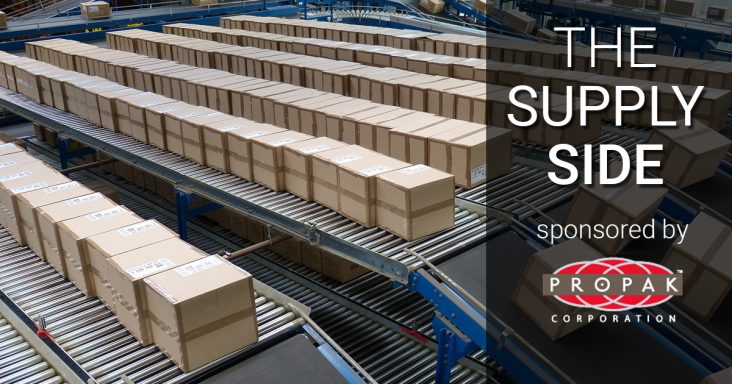The Supply Side: Retailers make progress on recovery amid healthier than expected spending
by July 9, 2021 8:46 am 537 views

U.S. discretionary spending on general merchandise continues to be healthier than expected. Dollar sales for the week ending June 12 rose 15% over the same period two years ago, continuing at a pace that exceeds the 9% growth over last year, according to “Retail Early Indicator” data from The NPD Group.
E-commerce appears to have reached a level of maturity, at least for the time being. Following massive growth during the pandemic’s heights, data shows slippage in online sales growth for the first time, accounting for an average of 29% of dollar sales for the 13 weeks ending May 29. The latest e-commerce results were a decline from the 38% weekly average during the same time in 2020 but still elevated compared to the 21% average in 2019.
NPD said the brick-and-mortar results are more unexpected. Physical store sales have not only rebounded, but they have also exceeded pre-pandemic levels. The average weekly discretionary general merchandise dollar sales at U.S. brick-and-mortar retail for the 12 weeks ending May 15 rose 9% from a year ago. The recent in-store sales were $1.7 billion higher than last year and $400 million above two years ago.
“E-commerce growth has not impeded opportunities for brick-and-mortar to grow,” said Marshal Cohen, chief industry adviser at The NPD Group. “This dual-channel growth demonstrates the need to link digital and in-store experiences. Consumers want a multidimensional retail option, and retailers and manufacturers need to speak to needs in both environments.”
He said consumer needs will rapidly shift as the U.S. progresses through the various stages of reopening. As a result, brands and retailers must be ready to handle volatile swings in consumer behavior. NPD recently outlined the four steps for retail reopening for retailers in the back half of 2021.
In stage one, travel will be essential to watch as many consumers gear up for trips after a yearlong break. Discretionary general merchandise industries should monitor how this impacts adjacent segments. For instance, declines in the luggage business have softened so far this year compared to much steeper reductions in late 2020, NPD’s Retail Tracking Service data shows. The business sales should accelerate as travel begins to pick up.
NPD predicts an upward trend in service industries, such as restaurants, as consumers start to feel safer going out, though it will be a while until pre-pandemic levels are reached. Cohen said key milestones to watch for this stage include about 100 million U.S. adults being fully vaccinated, a decline in the work-from-home rate and other gatherings taking place without reduced capacity. This stage likely took place in late May and early June.
In stage two, NPD expects more of a return to in-person activities, events and experiences. Consumers will purchase products to facilitate those experiences. Family gatherings and an increased physical presence at work — perhaps with hybrid arrangements and decreased office capacity — will mean many consumers will invest in new wardrobes as they re-emerge into the public. The return to commuting will be essential to watch. Even a partial return to work will impact the auto aftermarket as consumers shift their spending from discretionary do-it-yourself items to maintenance-focused items. Cohen also noted the potential for growth in accessories, such as backpacks and technology, like headphones, that consumers rely on for the work commute.
At this second stage, NPD expects about 150 million U.S. adults will be fully vaccinated with a further acceleration of workplace return and increases in work commutes. NPD said the U.S. looked to be in stage two at the end of June, with the fully-vaccinated adults population reaching 150 million, or 45.6% of adults, on June 20.
In stage three, NPD expects a stabilization period in the work-from-home, learn-from-home and entertain-from-home categories. As consumers adjust to a new lifestyle and adapt spending to facilitate in-person experiences, watch for more significant swings in retail performance.
Industries that surged in 2020 due to stay-at-home advisories, such as tech and small appliances, may return to a more moderate growth rate than pre-pandemic levels. The trajectory for many of the industries that benefited from the stay-at-home environment looks bright for the long term. In stage three, the analysts expect health officials will vaccinate about 180 million U.S. adults and 10 million kids. According to National Retail Federation data, the nation was engaging in stage three behaviors ahead of July 4, with more families gathering for Father’s Day and Juneteenth celebrations.
In the fourth and final stage of the process of retail reopening, retail sales will normalize. Brands and retailers across industries will need to consider how consumer behavior has been fundamentally altered during the pandemic.
Many consumers invested time and money in purchasing and learning to use equipment to facilitate fitness, cooking, working and entertaining at home. That means many of the industries that thrived in 2020 could remain elevated above pre-pandemic levels. On the other hand, sectors that struggled last year may find their sectors have changed permanently. Increased remote work may lead to more travel and mobility, and business travel may increase, benefiting accessories like luggage and backpacks. However, the casualization trend that took hold in apparel and footwear last year is likely to remain.
The final stage will offer valuable indicators for how consumer purchasing will evolve during the rest of the decade. Brands and retailers must be tuned into the changing dynamics of the consumer spending evolution. NDP is watching for business travel to return in this final phase of retail repositioning in a post-pandemic world.
Editor’s note: The Supply Side section of Talk Business & Politics focuses on the companies, organizations, issues and individuals engaged in providing products and services to retailers. The Supply Side is managed by Talk Business & Politics and sponsored by Propak Logistics.
